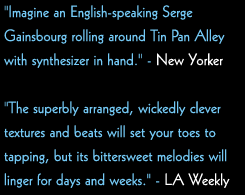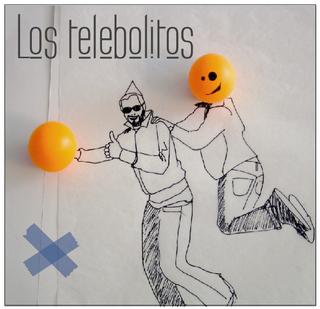
One of the most impresive professionals in motion design:
Previously, honour figured largely as a guiding principle of society, functioning as part of a code of honour for a gentleman and often coming to expression in the practice of duelling. One's honour, that of one's wife, of one's (blood-)family or of one's beloved formed an all-important issue: the archetypal "man of honour" remained ever alert for any insult, actual or suspected: for either would impugn his honour.
The concept of honour appears to have declined in importance in the modern secular West. Popular stereotypes would have it surviving more definitively in alleged "hot-blooded" Mediterranean cultures (Italian, Arab, Iberian...) or in more "gentlemanly" societies (like the "Old South" of Dixie). Feudal or other agrarian societies, focused upon land use and land ownership, may tend to honour "honour" more than do deracinated industrial societies. Traces of the importance attached to honour linger in the military (officers may conduct a court of honour) and in organisations with military echoes, such as Scouting.
"Honour" in the case of females is frequently related, historically, to sexuality: preservation of "honour" equated primarily to maintenance of virginity, or at least to preservation of exclusive monogamy. One can speculate that feminism has changed some linguistic usage in this respect.
One can contrast cultures of honour with cultures of law. From the viewpoint of anthropology, cultures of honour typically appear among nomadic peoples and herdsmen who carry their most valuable property with them and risk having it stolen, without having recourse to law enforcement or government. In this situation, inspiring fear forms a better strategy than promoting friendship; and cultivating a reputation for swift and disproportionate revengeMontesquieu to Steven Pinker have remarked upon the mindset needed for a culture of honour. increases the safety of one's person and property. Thinkers ranging from
Cultures of honour therefore appear amongst Bedouins, Scottish and English herdsmen of the Border country, and many similar peoples, who have little allegiance to a national government; among cowboys, frontiersmen, and ranchers of the American West, where official law-enforcement often remained out of reach, as is famously celebrated in Westerns; among the plantation culture of the American South, and among aristocrats, who enjoy hereditaryprivileges that put them beyond the reach of codes of law. Cultures of honour also flourish in criminal underworlds and gangs, whose members carry large amounts of cash and contraband and cannot complain to the law if it is stolen.
Once a culture of honour exists, it is difficult for its members to make the transition to a culture of law; this requires that people become willing to back down and refuse to immediately retaliate, and from the viewpoint of the culture of honour, this tends to appear to be an unwise act reflecting weakness.
Conceptions of honour vary widely between cultures; in some cultures, honour killings of (usually female) members of one's own family are considered justified if they have "defiled the family's honour" by marrying against one's wishes, or even by being the victims of rape. These honour killings are generally seen in the West as a way of men using the culture of honour to control female sexuality.
In contemporary international relations, the concept of "credibility" resembles that of honour, as when the credibility of a state or of an alliance appears to be at stake, and honour-bound politicians call for drastic measures.
Compare the concepts of integrity, face (social custom) in stereotyped Oriental cultures, or of mana in Polynesian society.
For a similar concept with many connotations opposite to honour, see shame.



Supodselly crows and ravens articulate sounds (the noisy interventions in groups) not to convey concepts but to express emotions...So a gathering of noisy crows is a poetry jam! Awesome birds...
Two things that I found funny when researching good liks for this entry: some individuals are obsessed in finding "white" crows...(white whatever, to give sense to their white ideals)...weird individuals. Some other individuals (most of humans i'm afraid) think of brave and selfsuficient animals as pest. Like animals have no right to survive finding food in our mess...researching about animals we find more thruth about humans, I think.


 prise and mostly to follow. I think religion (any religion) is a face on human social development that should be left as a bunch of fear on punishment (from the hand of a male god) mixed with faith on what it can not be explained, and of course all sort of social constructs to opress who rebels against the monopoly of faith based power. It is a power based on opression, ignorance, superstition, mediocrecy, with a veil of superficial mercy on others (mercy on who, I would ask).
prise and mostly to follow. I think religion (any religion) is a face on human social development that should be left as a bunch of fear on punishment (from the hand of a male god) mixed with faith on what it can not be explained, and of course all sort of social constructs to opress who rebels against the monopoly of faith based power. It is a power based on opression, ignorance, superstition, mediocrecy, with a veil of superficial mercy on others (mercy on who, I would ask).

Matt Woolman
Digital Information Graphics
Goal
VisualComplexity.com intends to be a unified resource space for anyone interested in the visualization of complex networks. The project main goal is to leverage a critical understanding of different visualization methods, across a series of disciplines, as diverse as Biology, Social Networks or the World Wide Web. I truly hope this space can inspire, motivate and enlighten any person doing research on this field.
Not all projects shown here are genuine complex networks, in the sense that they aren’t necessarily at the edge of chaos, or show an irregular and systematic degree of connectivity. However, the projects that apparently skip this class were chosen for two important reasons. They either provide advancement in terms of visual depiction techniques/methods or show conceptual uniqueness and originality in the choice of a subject. Nevertheless, all projects have one trait in common: the whole is always more than the sum of its parts.

A bon mot of brilliance delivered back when by Estée Lauder, one her son Leonard Lauder takes considerable delight in repeating.
Assuming the beauty doyenne was correct, these should be heady times for the house she founded. This month will see the first fruits of Lauder's curious marriage with Tom Ford, the man for whom sex and style are virtually synonymous. "We've always tried to position ourselves where we're selling something that's really sexy," says Leonard Lauder, the company chairman. "That's the cornerstone of Estée Lauder."
W: These pictures look futuristic-creepy—not a celebration of beauty.
TF: We are futuristic; we're on the cusp of being able to manipulate humans genetically to grow into whatever we think looks good. The moment we can start manipulating genes, how long are our legs going to get? Beauty used to be all about cream and lotions, and now it's not. It's about Botox. It's about fillers. It's about mini facelifts. We've reached a level of manipulation. And then of course I'm portrayed as the one doing the manipulating…the polishing, buffing, shaping, which is what I do. It's just what we do. What the fashion industry does.
 A couple of designers from portugal came with this design for bedding sheets:
A couple of designers from portugal came with this design for bedding sheets:


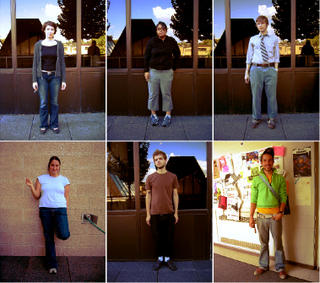



"After summarizing the existing iPod product line, Jobs explained that the iPod mini is what all of Apple's competitors are aiming for. Apple is "going to do something pretty bold," he said. Apple is "replacing it with something new."
Jobs calls the iPod nano "an entirely new ground-up design, that also has 1000 songs in your pocket." The white device features a color display and can support photos, uses a grey click wheel to navigate, and is 80 percent smaller in volume than the original iPod -- thinner than a number two pencil, said Jobs. The iPod nano weighs 1.5 ounces or 42 grams.
Compared to the iPod mini, the iPod nano is half the thickness and 62 percent smaller by volume. It uses a 30-pin dock connector, so the iPod nano plugs in to existing iPod accessories, and can also connect using USB 2.0. It features a 14-hour rechargeable battery. It achieves its small size by eschewing a hard disk drive in favor of flash memory."
"Jobs told the crowd that Apple has sold more than half a billion songs through its iTunes Music Store to date. "We are selling songs at a rate of 1.8 million songs per day," he explained. "iTunes has an 82 percent market share here in the US."
Jobs reiterated an Apple press release offered earlier today that it has 80 percent of the legitimate online music download market in the UK, and said that iTunes is doing "extremely well around the world." There are iTunes Music Stores in 20 countries, he said, representing 85 percent of the global music market."

The "religion" has since become an Internet phenomenon that has garnered many followers of the Flying Spaghetti Monster (sometimes referring to themselves as "Pastafarians", a pun on Rastafarians) who claim to have been touched by "His Noodly Appendage" and preach the word of their "noodly master" as the one true religion. Flying Spaghetti Monsterism is primarily the invention of Bobby Henderson, a graduate of Oregon State University with a degree in physics.
 Thomas Hobbes (leviathan) resonates in mi head while listening to the news of the collapse of "civility" in New Orleans. I believe is time for this U.S. system to develop a conscientious staged process for granting "the order of civilization", avoiding the "natural law" rule. It seems that they (current higher political power) takes for granted civilization as a condition intrinsic to geographical area, and the use of military power...They fail to see basic structures on different societies that maintain and legitimate order. It is a extremely complicated topic in deed. Hobbes gives at least one of the corner stones for understanding human behavior, chaos, and power legitimacy.
Thomas Hobbes (leviathan) resonates in mi head while listening to the news of the collapse of "civility" in New Orleans. I believe is time for this U.S. system to develop a conscientious staged process for granting "the order of civilization", avoiding the "natural law" rule. It seems that they (current higher political power) takes for granted civilization as a condition intrinsic to geographical area, and the use of military power...They fail to see basic structures on different societies that maintain and legitimate order. It is a extremely complicated topic in deed. Hobbes gives at least one of the corner stones for understanding human behavior, chaos, and power legitimacy.
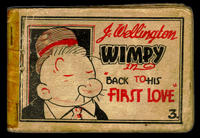
 While living in Berlin in my very early twenties, I discovered that sex was a pastime for many people trying to stop boredom: some type of national hobby. These days I think it is a pastime not exclusive to a culture or an age...Even though some want to believe it is exclusive to a gender.
While living in Berlin in my very early twenties, I discovered that sex was a pastime for many people trying to stop boredom: some type of national hobby. These days I think it is a pastime not exclusive to a culture or an age...Even though some want to believe it is exclusive to a gender.
"Inspired by a shared interest in the striking dress codes of various social groups, the Rotterdam-based photographic team of Ari Versluis & Ellie Uyttenbroek have been systematically hamstringing such permutations of received identity for ten years. They call their series Exactitudes, a contraction of “exact” and “attitudes”. It’s August Sander and Eugène Atget turned on their heads by Bernd and Hilla Becher - a direct assault on the mythic formula that photography plus the street equals authenticity.
By dragging the repertory of the street kicking and screaming to the studio backdrop, the series offers a purposely absurd response to the sentimentality of Jamal Shabazz (“Back in the days”) and the beloved and utterly bogus spontaneity of the photo booth. It’s a perfect fit for an age that’s made the “cool hunt” a corporate pursuit. Of course the photos are starchy and obdurately posed and ever so consciously styled, because there can be no meaningful limit to the cross-contamination between those notions of a authenticity and supreme self-awareness."

“SHOWstudio is based on the belief that showing the entire creative process—from conception to completion—is beneficial for the artist, the audience and the art itself.”
SHOWstudio is an online project committed to showing the process of creativity. Throughout its first four years, SHOWstudio has consistently broken new ground in pioneering new forms of interactive and motion imagery at its London studio and broadcasting these unique art and fashion collaborations via its award-winning website. Providing a ‘view from within’ the industry, its aim is to unpack every aspect of fashion image-making, from the generation of ideas and production stages through to the problem solving and minutiae of executing the final images.



Andersen M Studio was formed by graphic designer and photographer Martin Andersen and has been operating since 1998.
The Studio works on a range of projects from music labels, book design, identities, fashion to branding campaigns. Clients include: Thames & Hudson, Virgin Records, EMI, Rough Trade, Accenture.
"Our influences stem from the classical, the avant-garde and contemporary art in creating solutions that have an enduring symbiosis between image and the written word."
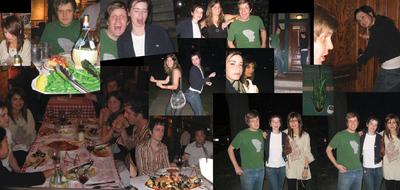

A comment from an article in the NY times:"the Core Club, set to open its doors, for a few people anyway, in mid-September. "
"I see it more like a SOHO House," she said. "You know it's not really about if you're of a certain class. It's about interesting people."To assist members in this mission, club consultants or "curators" will filter through the cultural detritus of the day to recommend the best stuff to members.Lea Carpenter, a former publisher of The Paris Review, has been hired to curate the library; Yvonne Force Villareal, an art consultant and the wife of the artist Leo Villareal, will curate the art offerings. David Koh, a former film executive, will curate the movie library and so on. For the tens of thousands of dollars in fees, the elite membership is also promised access to galleys of coming books and screenings of not-yet-released movies - all the entree, in other words, of your average Entertainment Weekly intern.While traditional clubs serve to promote homogeneity and to preserve the social order by keeping new and different people away, the Core Club's pitch - and as a for-profit corporation, it has a pitch - is that it will serve as a place for a geographically and socially diverse set of wealthy people to gather and meet others of the same disparate tribe. As a result, its membership list resembles a kind of Noah's ark manifest of overachievers from various professional species."
Classism and colonialism recedes in front professional success (?)
Yeah, sure! If you give me $55.000 , I'll tell you how progressive you are.
My comment on such leisure activities of these "interesting" rich dudes, is that they think that only by paying they can compare them selves to intellectuals, artist and other "interesting people", when they are mere consumers of the work of others. Are they producing, in return, valuable matter? Are they even getting a profound experience? Do they want superficial interactions?
Is the consumption of cultural issues helping others than themselves?
I think that being a Museum patron or a "one artist" patron is more rewarding for all sides involved.
I would say the "interesting people club" is creating for them selves an illusion of cultural awareness: entertaining but superficial. A congregation of pseudo intellectual people that get bored easily, paying for sophisticated buffoons.
The question is: does the "new buffoon" make these "new kings", or the other way around?
If they would really interest in being part of trascendental social progress they should consider being witnesses also of the not flattering cultural reality: not only for entertaining purposes.A real jester was able to pronounce what others would not dare to the king. The benefit was awareness, something elusive to people that isolate themselves with power or within the same group of people. Are those interactions from the new club meaningful for society at large? The level of ethics is still low if they think that they can acquire instantly the identity and awareness than others struggle to achieve -without that many curators by their side-.
Interesting topic anyhow.
 This song is so sweet, but the video kind of sucks!
This song is so sweet, but the video kind of sucks!


